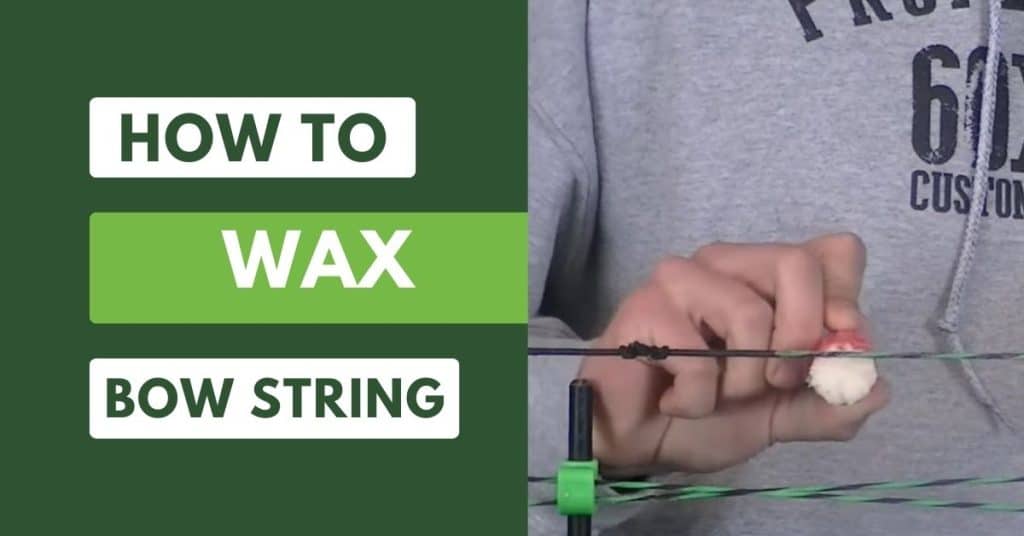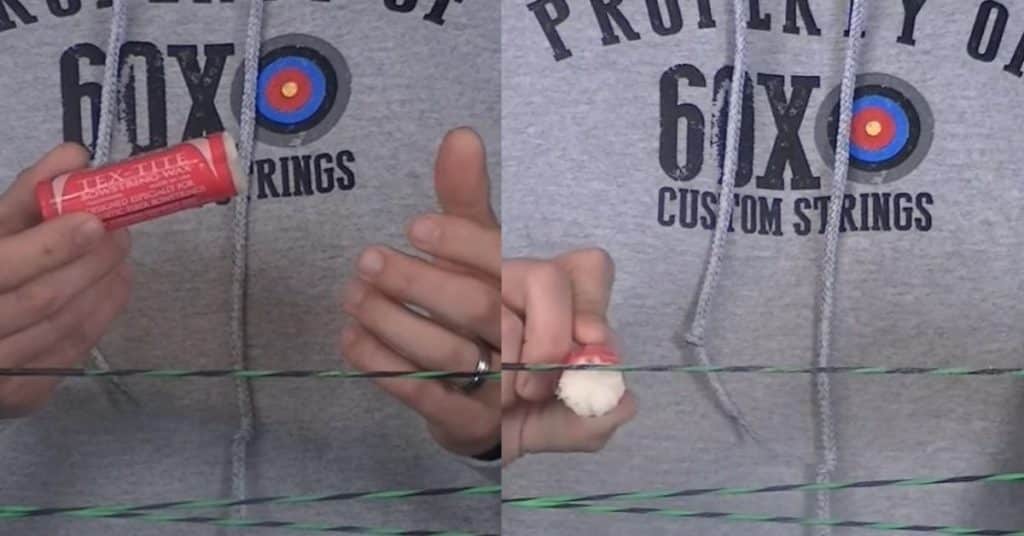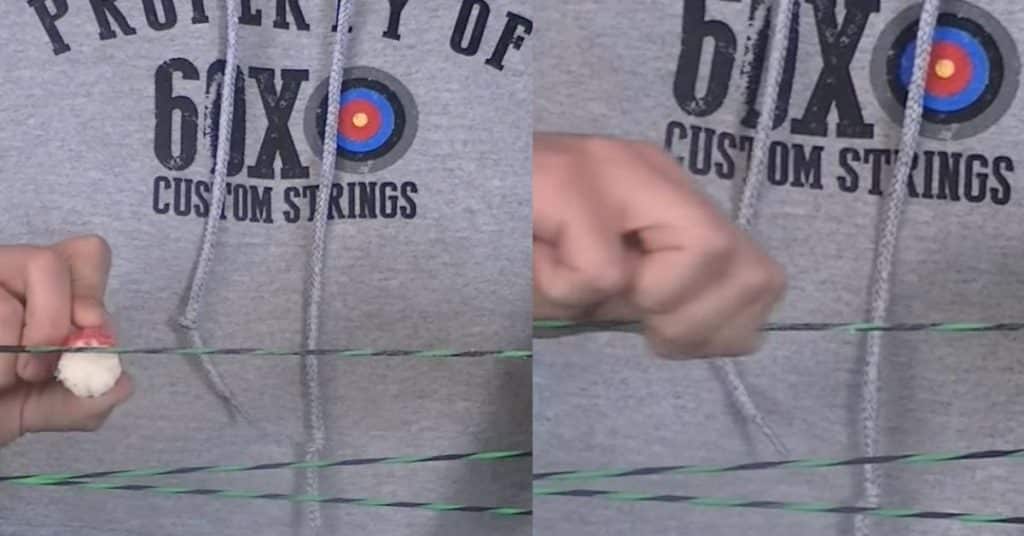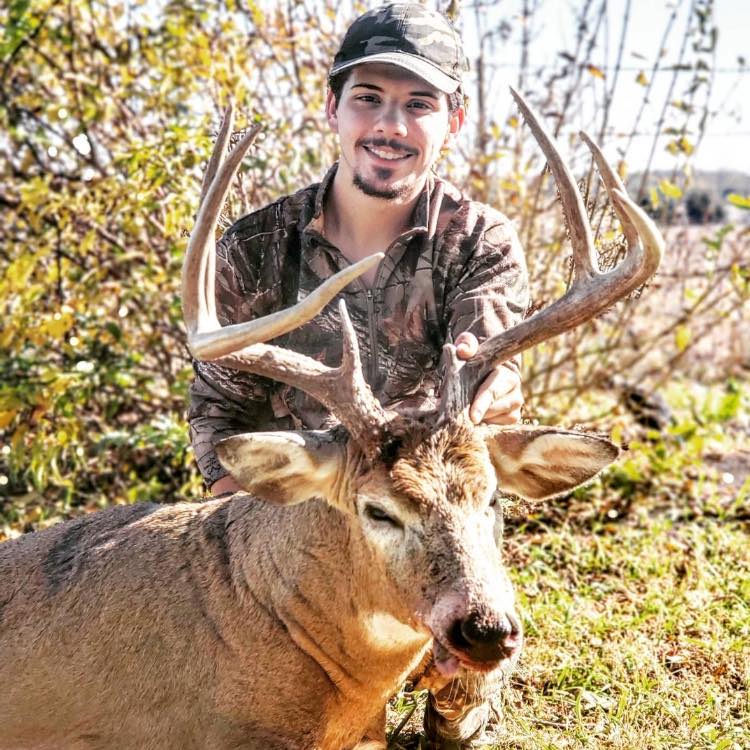Waxing a compound bow string is an often overlooked but essential step in archery mastery. While grip, release, and stance are critical components of marksmanship, combining them with a properly waxed string can unlock levels of accuracy and consistency that many archers dream about. In this guide, we will explore the process of waxing a compound bow string and its significance in maintaining the bow’s performance.

Importance of Waxing a Compound Bowstring
Bowstring wax is a specially formulated substance designed to lubricate and protect bowstrings, contributing to their overall performance and durability. It offers several benefits that directly impact an archer’s shooting experience. Waxing the bowstring serves several purposes:
Prevents fraying:
Bowstring wax reduces the chances of fraying and separation by keeping the individual strands tightly bound together, thereby improving the overall structural integrity of the bowstring as well as increasing the string lifespan.
Adds a waterproof element:
By waxing the string, you create a protective barrier that prevents water from getting between the strands. This ensures that the bowstring remains unaffected by moisture and maintains its performance.
Retains twists:
Waxing the string helps retain its twists, ensuring that the bowstring stays in its proper alignment.
Maintains smoothness and tackiness
A properly waxed bowstring has a smooth, slightly tacky feel. Regular waxing helps maintain this texture, enhancing the overall shooting experience. By applying bowstring wax, archers ensure that the string remains in top condition, minimizing any potential disruptions that could affect arrow trajectory and accuracy.
Reduces Noise and Vibration
Unwanted noise and vibration can be distracting and affect an archer’s shooting experience. Bowstring wax helps minimize the noise generated during the release of the arrow by dampening vibrations. This reduction in noise and vibration ensures a quieter shot and reduces the chances of alerting game animals during hunting activities.
How To Wax a Compound Bow String Professional Way: DIY
Determining the Waxing Frequency:
The frequency at which you should wax your compound bow string depends on several factors, including:
- Frequency of use
- Exposure to elements
- Hunting season activities
As a general guideline, it is recommended to wax the bowstring approximately every seven uses during the summertime. However, if your bowstring is frequently exposed to the elements or you are in the midst of hunting season, more frequent waxing may be necessary to maintain optimal performance.
Gathering the Necessary Supplies:
Before you begin waxing your compound bow string, it is essential to gather all the necessary supplies. For this process, you will need a standard tube of bow wax, typically available in stick form and lasting several years. Having the proper tools readily available ensures a smooth waxing experience.
Preparing the Bow:
Regardless of the type of bow you own, the first step is to prepare it for waxing. Start by removing the cables from the cable slide or rollers, depending on your bow’s design. This step ensures that the wax is applied directly to the bowstring without any hindrance. You can lay your bow on a counter there is nothing wrong to do that too.

Applying Wax to the String:
With your bow prepared, it’s time to apply the wax to the bowstring. Take the bow wax and apply a small amount to the string, avoiding any serving material, as it can cause sliding and separation. Begin by running the wax along one side of the string, then do a quick swipe on the other. Focus on areas without serving, as these sections require waxing.

Waxing the Peep Sight Area:
If your compound bow has a peep sight, it’s important to wax the string above and below it. However, exercise caution and avoid waxing directly where the string contacts the peep sight. Waxing this area can create unwanted slipperiness and cause the peep sight to shift, affecting your accuracy. Therefore, be mindful of this while applying wax.
Waxing the Cables and Yoke System:
To truly elevate your bow’s performance, it is crucial to wax not only the bowstring but also the cables and, if applicable, the yoke system. Apply wax to the cables by going down one side of each cable and then coming back up the other side. If your bow features a yoke system, wax that area as well. By waxing these components, you enhance their durability and extend their lifespan.
Working in the Wax:
To ensure the wax is thoroughly integrated into the bowstring, take a piece of leather, such as deer hide, and rub it back and forth on the waxed string. The friction and heat generated by the leather aid in melting the wax into the string, resulting in better penetration and longevity.

Paying Attention to Critical Areas:
While handling wax, exercise utmost caution around the peep sight area, making sure to avoid any unintended movement.
Here’s a pro tip: pay close attention to the cable guard system, especially the cable slide. Working the wax into the string is important, giving your bow the tender, loving care it deserves. This step works wonders, especially if you’re dealing with a bow that has significant friction. It’s like giving your bow a smooth-operating makeover. If by any chance your bowstring displaced its position don’t worry you can follow this bow restring process.
Regular Maintenance:
Waxing your compound bow string regularly is key to extending the life of the strings and cables. As a general guideline, it is recommended to wax your bowstring every five to ten uses, with more frequent waxing during hunting season or in environments with higher humidity levels. By adhering to a regular maintenance schedule, you ensure consistent performance and avoid unnecessary wear on your equipment.
Extra Tips: Proper Storage of the Bow
Properly storing your compound bow is crucial, especially when you have finished waxing the bowstring and don’t have any immediate plans for hunting or participating in archery events. Follow these guidelines to ensure the longevity of your bow:
- Find a dry and cool storage location that is shielded from direct sunlight and extreme temperatures.
- Avoid leaving the bow in a strung position for prolonged periods, as this can place unnecessary stress on the bowstring.
- If you intend to store the bow for an extended period, consider loosening the string slightly to alleviate tension.
Process Of Waxing a Recurve Bow:
If you own a recurve bow, the waxing process is slightly different. Apply wax by running it down one side of the string and back up on the other side. As with a compound bow, use a piece of leather to melt the wax into the string. Pay special attention to areas where the string comes into contact with the bow, as these points are prone to wear and tear.
Types of Wax for Compound Bow String
There are different types of wax available for waxing a compound bow string. Here are the three most common options:
Natural Wax: Made from natural ingredients such as beeswax, natural wax is an environmentally friendly choice. It provides excellent lubrication and protection for the bowstring.
Synthetic Wax: Synthetic wax is typically made from a combination of synthetic materials. It offers similar lubricating properties as natural wax but may have a different texture.
Petroleum-based Wax: Petroleum-based waxes are usually made from petroleum jelly or similar compounds. They are known for their high water resistance and longevity.
Common Mistakes to Avoid While Waxing The Bowstring
While waxing a compound bow string is a relatively straightforward process, there are some common mistakes that archers should avoid:
Applying too much wax
Excessive wax can lead to a build-up on the string and negatively impact its performance. Remember, a thin, even layer of wax is sufficient.
Neglecting regular maintenance
Waxing should be part of your routine maintenance for the bowstring. Don’t overlook this crucial step to ensure optimal performance and longevity.
Using the wrong type of wax
Each type of bowstring material may have specific requirements regarding the wax product. Using the wrong wax could lead to subpar results or even damage to the string.
Additional Maintenance Considerations For Keeping The Bowstring In Sound and Working State:
In addition to waxing your compound bow string, there are a few other maintenance tasks you should undertake:
Inspect the serving material
Regularly check for any separation or breaks in the serving (thread) on the string and cables. Proper serving should sit in tight coils on top of the string, and any separation in the nocking area should be promptly addressed.
Recurve bow adjustments
Recurve archers should measure the bow’s brace height to check for string stretch. If necessary, adjust the brace height by adding twists to the string. This helps maintain optimal performance and accuracy.
Compound bow adjustments
Compound bow users should periodically check cam timing to ensure synchronization. If the cams are out of sync, twisting the cables can bring them back together. For single-cam bows, consult the manufacturer’s guidelines for proper cam position and address any cable stretch by twisting the cable.
Conclusion
Waxing a compound bow string is a simple yet essential skill that every archer should master. By following the steps outlined in this guide and paying attention to critical areas, you can maintain optimal performance and increase the longevity of your bowstring. Remember, regular waxing and maintenance are crucial for a smooth and enjoyable shooting experience. So, grab your bow wax, prepare your bow, and give your compound bow string the care it deserves. Happy shooting!

About The Author:
Lake Streeter, A Gun enthusiast, and loves to hunt in the middle of the wood. Always check the latest hunting gears out in the market and try to share his honest opinion with the audience in Hunting Nook.
